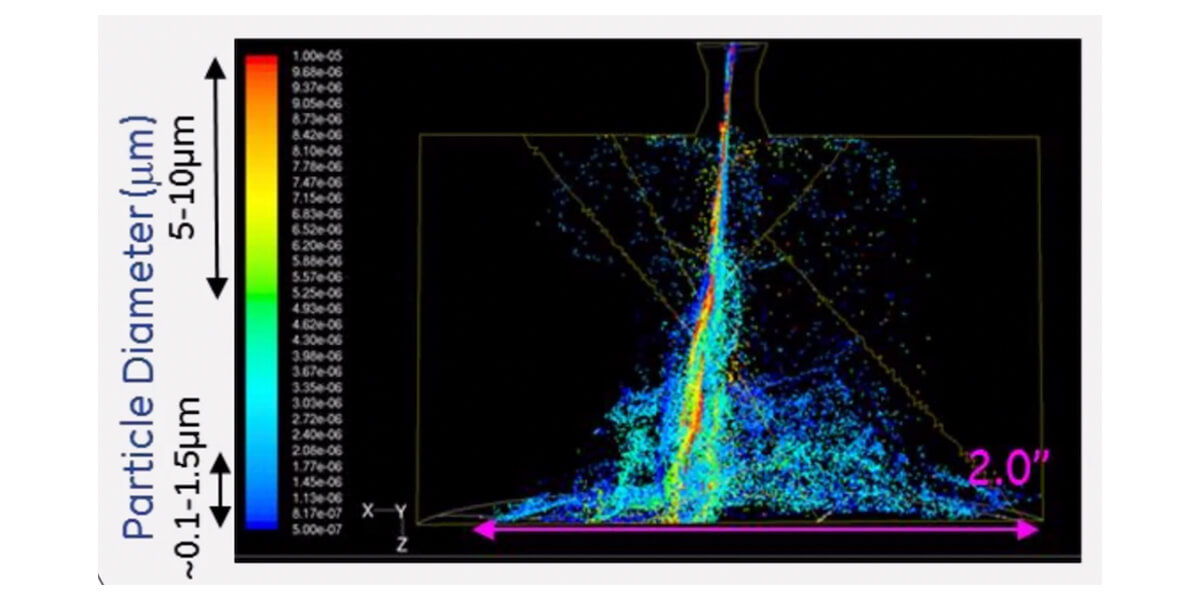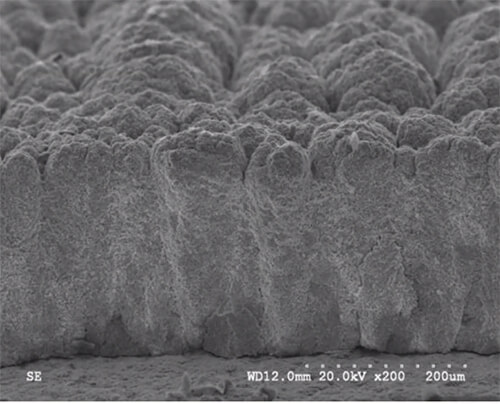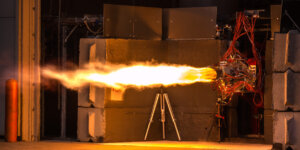
Visualization of supersonic spray coating the interior of a combustion turbine with a protective thermal layer
In the race to discover powerful sources of renewable energy, hydrogen fuel is a major contender. However, that will require developing engines that can withstand the wear and tear caused by hydrogen combustion – no small feat.
Roger Ghanem, Gordon S. Marshall Professor of Engineering Technology and Professor of Civil and Environmental Engineering and Aerospace and Mechanical Engineering, is an expert in the field of probabilistic modeling for addressing uncertainty in physical systems – all the more important, as we enter uncharted territories of energy generation.
To this end, Ghanem has teamed up with researchers from the University of Virginia and the University of Pittsburgh, alongside industry partners at General Electric Research. The collaborative project, titled “H2 Gas Turbine Thermal Barrier Coating Durability and Process Enhancement with Revolutionary Probabilistic Machine Learning,” has received a $2 million grant from the U.S. Department of Energy – part of the nationwide push towards investing in renewables and advanced manufacturing.
We caught up with Ghanem to learn more about the project, and its potential to advance the clean energy revolution.
What are the goals of the project?
Ultimately, the desired impact of the research is to establish a viable alternative to the extraction and consumption of fossil fuels. The process of generating hydrogen fuel causes thermal and mechanical degradation inside the gas turbines where combustion takes place – our project involves designing a supersonic spraying technique as part of an additive manufacturing process that will coat the inside of the turbines with a thermal layer, thereby protecting the engine.
What are some of the major challenges?

Spray particles solidify to form a protective thermal barrier on the surface of a combustion turbine
To design the engine, we need to determine the distance of the nozzle from the engine wall, the speed of the injection, the temperature level and the physical properties of the spray, so that we can achieve a coating with the desired thermal and mechanical properties.
However, we don’t yet fully understand the physical behavior of the thermal protective layer in a high-temperature hydrogen environment, so we need to thread together knowledge gleaned from small-scale lab experiments, mathematical and physics insight, and statistical and machine learning calculations to develop an economical and reliable design of the spraying process that takes into account modeling errors. In addition, our industry partners don’t yet have large amounts of data – the valuable information that can be learnt from machinery failures once the engines are up and running. So, we’re having to develop new modelling and statistical techniques that compensate for the lack of data, and that’s part of what makes this project so innovative.
What different areas of expertise are being applied in the project?
The project benefits significantly from being a collaboration between academia and industry partners. One of the requirements of the U.S. Department of Energy is that we produce a design that can be constructed by the end of the project, and you can only do that through this type of collaboration.
The General Electric team brings expertise in data collection and how to construct hydrogen engines. The team at the University of Virginia include specialists in thermal physics and thermodynamics, and the University of Pittsburgh team has a state-of-the-art lab where they can test lab-scale specimens in a high-temperature hydrogen environment.
What do you find most energizing about the project?
At one level, there’s the process of creating new knowledge. Then there’s the wider impact of enabling alternative energies that have the potential to replace fossil fuels.
In addition, the integration of machine learning, applied mathematics and physics-based modelling that we are developing has applications beyond the scope of this particular project. For instance, we are adapting similar ideas to design lightweight components for electric cars, and to forecast energy demand that assists utility companies in planning for power generation in response to climate extremes.
Published on September 8th, 2023
Last updated on September 8th, 2023











